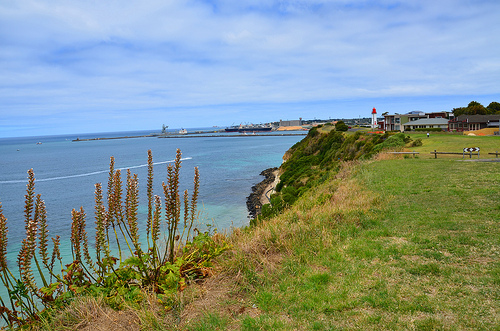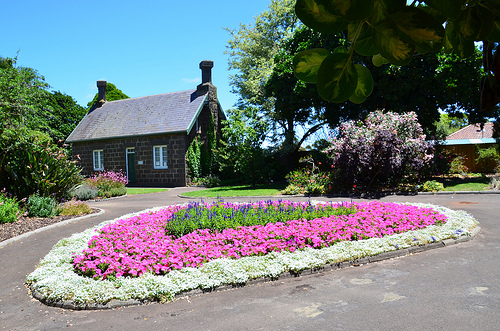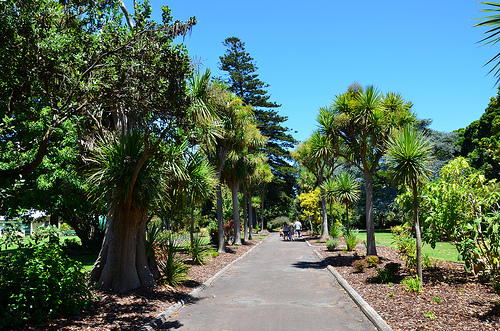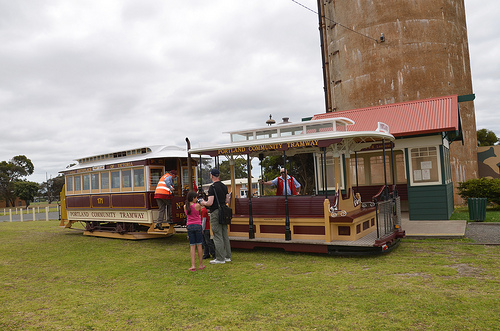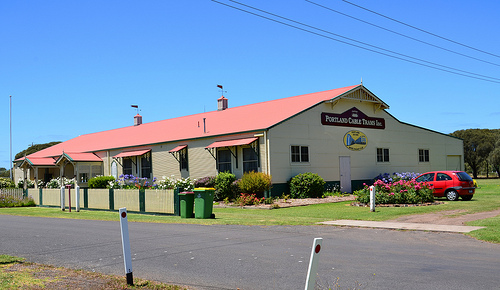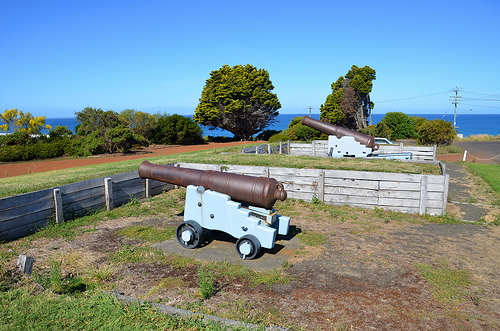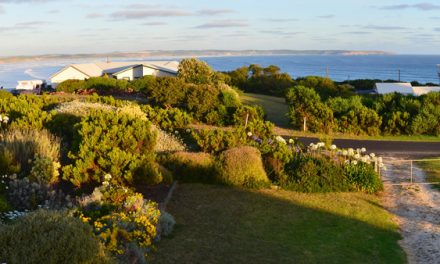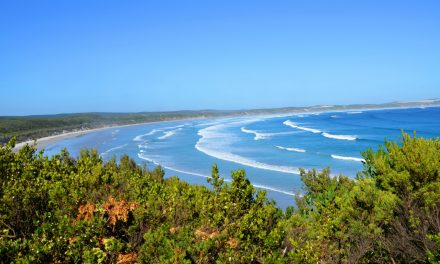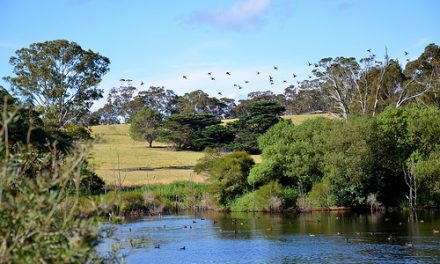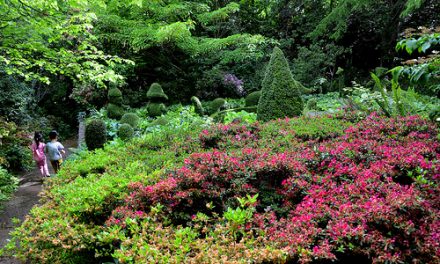Note: I have not included in this post the spectacular Cape Bridgewater and Cape Nelson, which are considered attractions of Portland because they deserve separate coverage.
Portland is located on Portland Bay 360 km west of Melbourne and 75 km east of the South Australian border. It is proclaimed a city on 28 Oct 1985 in the presence of Prince Charles and Princess Diana. It has a current population of around 12,000.
As the only deep-sea port between Adelaide and Port Phillip, it is a major exporting centre for southwestern Victoria and southeastern South Australia, principally exporting wool, grains and secondary products made in Portland itself. Other contributions to the local economy are made by the Alcoa aluminium smelter (Australia’s third largest and employing 700 people), the fertiliser industry, woolstores, tourism, wind energy production and the fishing industry (focusing particularly on crayfish, lobsters, shark, abalone and deep-sea trawling).
Portland was once occupied by the Kerrup-Tjmara people who called the area “Pulumbete” meaning “Little Lake” which refers to the current Fawthrop Lagoon. It was settled by Edward Henty in November 1834 before Batman settled in Melbourne, making it the oldest European settlement in Victoria.
Map showing the various attractions of Portland
View Portland & Cape Nelson, Victoria in a larger map
Portland Maritime Discovery and Visitors’ Centre
Located on the foreshore of Portland, adjacent to Lee Breakwater Rd (GPS S38.34596, E141.60739) and open daily 9 am to 5 pm, this functions as the local information centre and also has displays on local maritime and settlement history, whaling, shipwrecks, marine life and exploration, etc. There is an admission fee to enter the Maritime Discovery Centre which is located beyond the information section.
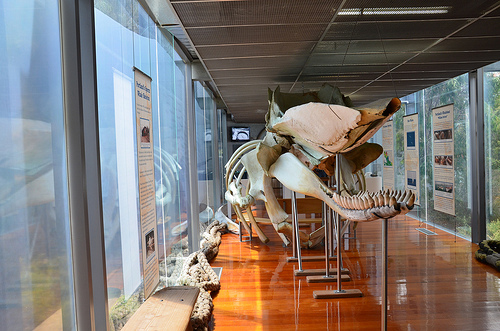
Portland’s Sperm Whale Skeleton
World War II Lookout Tower Museum
This 25-metre tower in Wade St, Anderson Point (GPS S38.333683, E141.607946) was built in 1931 to store drinking water pumped from underground. It faced closure and demolition as its function was taken over by a water supply system developed in the 1970-80s at Bald Hill.
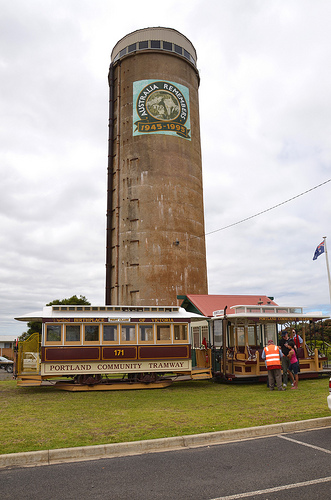 |
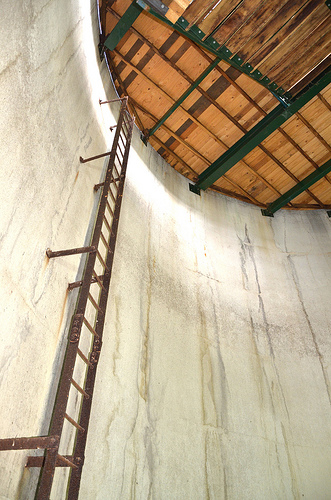 |
In 1994, it was converted into a lookout and memorial museum with displays relating to Portland’s involvement in World War II.
An internal spiral staircase leads to several landings, each with exhibits and to the top lookout which offers 36-degree panoramic views of Portland and surrounding areas. It is open daily from 10 a.m. to 4 p.m.
Portland Harbour and Foreshore
These feature a playground area, a pier and a marina (carpark GPS S38.348426, E141.6075620). Pedal steamers operate on weekends and in the summer school holidays at Henty Beach.
You can drive your car on the Lee Breakwater, which forms the northern boundary of the harbour and runs in an east-west direction. It is 1.179 km long and its extremity is in 12.2 metres deep of water.
From Lee Breakwater, there are excellent views of the expansive white sands of Nuns Beach which lies north of the breakwater.
Whalers Bluff Lighthouse
This lighthouse at the end of Lighthouse St on Whalers Bluff, also known as Whalers Point, stands about 1.5 km north of Portland’s city centre and overlooks Portland’s harbour. It is operated by the Victorian Channels Authority, part of the Port of Melbourne Corporation.
The lighthouse was originally built at Battery Point in Portland in 1859 and was known as the Portland Bay Light. In 1889 it was relocated, stone by stone, to Whalers Bluff in order to make room for gun emplacements at Battery Point. Another reason given for the relocation was that it was less vulnerable to attack on Whalers Bluff.
Portland Botanic Gardens
This is located at the eastern end of Glenelg St (GPS S38.35254, E141.605754). Along with Geelong Botanic Gardens, these are the second oldest in Victoria. With the help of Ferdinand von Mueller, the then curator of Melbourne Botanic Gardens, work on the gardens began in 1857. The land was prepared by 80 Chinese prisoners from Portland Gaol.
Near the front gate is a 2-storey bluestone cottage, home of the gardens’ curator. It features a bedroom, nursery, kitchen, parlour and annex, furnished as a late nineteenth century workman’s cottage.
The front part of the gardens includes somewhat unusually a croquet lawn, which is well used by a very active croquet club. The back half originally included a creek and some islands but the islands were removed and the creek became a canal with downsizing of the gardens. It is now home to an impressive array of native plants.
Portland Cable Trams
Established as a tourist venture in June 1996 and run by volunteers, the Portland Cable Trams link Portland’s major attractions, including the Botanic Gardens, Maritime Discovery Centre, Powerhouse Car Museum, WWII Memorial Tower and Cable Tram Museum. The tram track is one of the most scenic in Australia. It runs along Henty Beach, providing a closeup view of a working deepwater harbour before climbing up the cliff top affording panoramic views of the harbour and Portland Bay. It then passes alongside the historically significant “ploughed field” on the way to the WWII Memorial Lookout Tower. The return trip takes about 1 hour.
The trams used are refurbished saloon cars and an exact replica of a grip car. While original cable trams are propelled by gripping underground cables, Portland’s trams are driven by a concealed diesel engine. The tram depot is located at Henty Park and houses a vintage ticket office, gift shop, maintenance workshop, museum and theatrette which features films of 1888-1940 Melbourne cable trams.
The tram runs daily, 10am-4pm in summer and 10am-3pm in winter. Tickets can be used to travel all day and visitors can get on and off as they please at any of the 5 stops along the way.
Powerhouse Motor & Car Museum
This museum is located at the corner of Glenelg St and Percy St adjacent Fawthrop Lagoon. It features more than 30 vehicles and 600 items, including veteran, vintage classic cars and motorcycles, a Penny Farthing bicycle, a 1920s Cable Tram and Grip car, stationary engines, antique signs, petrol pumps, tools, model cars, tractors, garage equipment and other memorabilia. There are also interactive displays for the children including a moving steam engine, two-sectioned, push button operated motors, an early model Holden 6 cylinder grey motor and a Mazda rotary motor.
Fawthrop Lagoon
Originally known as the “Pulumbete” or “Little Lake” to the aboriginal Kerrup-Tjmara people, this lagoon was named after Portland’s first harbour master. It was the estuarine lagoon of Wattle Hill Creek and had been extensively modified as a storm water retardation basin. It is now a wetland, home to about 150 species of birds throughout the year, including black swans, pelicans, red-tailed black cockatoos and royal spoonbills.
The 5 km of path around Fawthrop Lagoon (map) is fully paved and suitable for walking, running, wheelchairs, prams and bicycles. There is a bird hide on the western section of the lagoon, free undercover barbeques and exercise equipment behind the soccer field. The lagoon is accessible from the canal bridge and Glenelg St. Parking is available on Glenelg Street 100m past the Powerhouse Museum, on Hood Street behind the soccer field, on View Street and at Henty Park.
Burswood Homestead & Gardens
At the southern end of Bentinck St is a bridge which spans the canal that links the ocean to Fawthrop Lagoon. On the far side of the bridge, to the immediate left, is Burswood, a fine single-storey bluestone Regency-style mansion built in the early to mid 1850s for pioneer settler Edward Henty. His third home, it is said to be a copy of a Henty family home in Sussex. He brought the framework, 18 000 hardwood shingles and 2500 bricks from Tasmania. It is now a bed-and-breakfast.
Portland Battery
Batteries were constructed in the 1870s in Portland (built in 1889), Port Fairy and Warrnambool to defend Victoria against a feared Russian invasion. Portland Battery is located at Battery Point, Victoria Parade. The site was gazetted for defence purposes in the 1840s. The Portland Lighthouse was built on the site in 1859, which was then relocated to Whalers Point to make way for the Battery. The Battery comprised a magazine, an upper chamber, a parapet wall and 3 gun emplacements. During WWII, the Battery was used by Volunteer Air Observer Corps for aircraft movement observations.
In 1984, the Battery underwent a major restoration and now comprises a 80 pounder rifled muzzle-loading gun original to the Battery and 32 and 68 pounder smooth bore guns on wooden carriages (not original to the Battery). There is also a 68 pounder smooth bore cannon located outside Glenelg Shire Council Offices in Cliff Street, Portland. Due to the rarity and intactness of the cannons in Portland, two are identified as being of high significance at an international level and two as being of exceptional international significance.
Point Danger at Cape Sir William Grant
Follow the Madeira Packet Rd south out of town, along the coastline and past the golf course. It leads by Blacknose Point and Crumpets (both noted surfing areas). Before you get to the aluminium smelter, take the signposted left which leads to Point Danger. Point Danger is located 6 km south of Portland’s city centre in Cape Sir William Grant, the smallest of the 3 capes, the other two being Cape Nelson and Cape Bridgewater.
A viewing area overlooks the offshore Lawrence Rocks (2 km south of Point Danger) which nests the largest Australasian gannet colony (more than 6000 pairs) in the Southern Hemisphere. The gannets arrived in the spring of 1995 and fly between Point Danger and Lawrence Rocks.
Smelter Nature Walk
If you ignore this turnoff and continue along the main road, it leads past the smelter to a dead end which is the start of the Smelter Nature Walk, a 2.2-km paved track that passes through coastal cliff-top scenery. It is wheelchair friendly and a motorised wheelchair is available. The walk provides nice views of Portland Bay and passes historic sites such as a sealing station and bay used for quarantine purposes in the 1800s.
Portland Bay Festival and Events
In November during the weekend preceding the Melbourne Cup, the city comes alive with the Portland Bay Festival featuring:
- Break Fest – a youth rock concert
- A major Rotary Art Show in the Civic Hall
- The celebrated Three Bays Marathon, Relay & Walk
Annual events include:
- Foreshore Carnival in January
- Fishing Competition in February
- Dahlia Festival in March
- Jazz Festival and Pioneer Week in November
- Surfboat Marathon in December

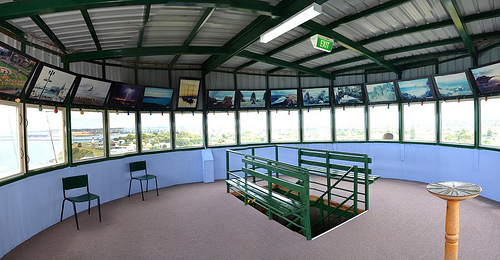


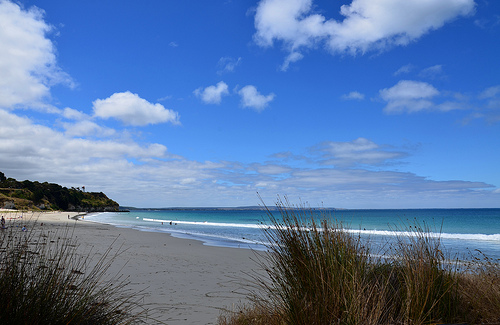 Li
Li